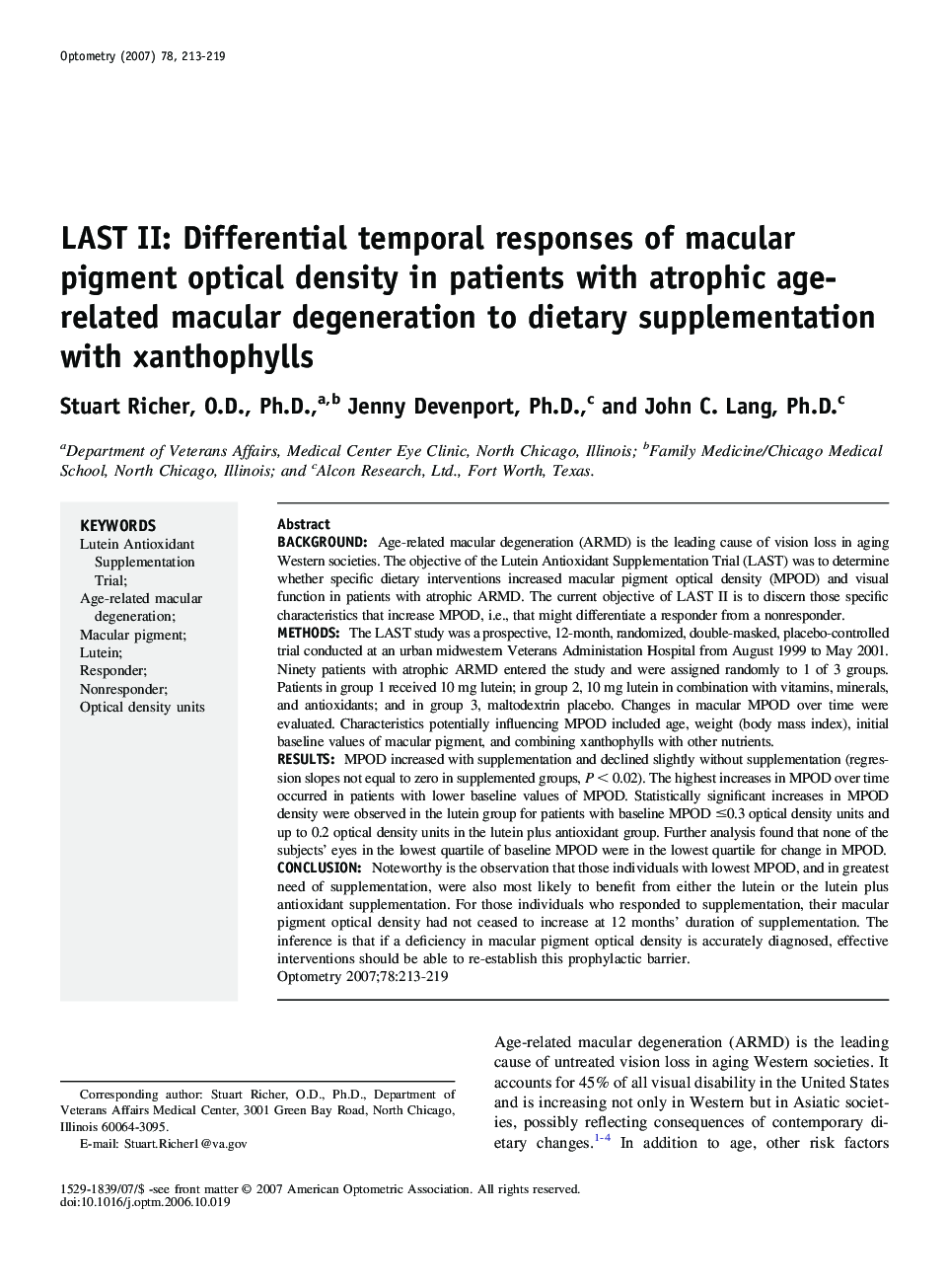| کد مقاله | کد نشریه | سال انتشار | مقاله انگلیسی | نسخه تمام متن |
|---|---|---|---|---|
| 2703129 | 1565077 | 2007 | 7 صفحه PDF | دانلود رایگان |

BackgroundAge-related macular degeneration (ARMD) is the leading cause of vision loss in aging Western societies. The objective of the Lutein Antioxidant Supplementation Trial (LAST) was to determine whether specific dietary interventions increased macular pigment optical density (MPOD) and visual function in patients with atrophic ARMD. The current objective of LAST II is to discern those specific characteristics that increase MPOD, i.e., that might differentiate a responder from a nonresponder.MethodsThe LAST study was a prospective, 12-month, randomized, double-masked, placebo-controlled trial conducted at an urban midwestern Veterans Administation Hospital from August 1999 to May 2001. Ninety patients with atrophic ARMD entered the study and were assigned randomly to 1 of 3 groups. Patients in group 1 received 10 mg lutein; in group 2, 10 mg lutein in combination with vitamins, minerals, and antioxidants; and in group 3, maltodextrin placebo. Changes in macular MPOD over time were evaluated. Characteristics potentially influencing MPOD included age, weight (body mass index), initial baseline values of macular pigment, and combining xanthophylls with other nutrients.ResultsMPOD increased with supplementation and declined slightly without supplementation (regression slopes not equal to zero in supplemented groups, P < 0.02). The highest increases in MPOD over time occurred in patients with lower baseline values of MPOD. Statistically significant increases in MPOD density were observed in the lutein group for patients with baseline MPOD ≤0.3 optical density units and up to 0.2 optical density units in the lutein plus antioxidant group. Further analysis found that none of the subjects’ eyes in the lowest quartile of baseline MPOD were in the lowest quartile for change in MPOD.ConclusionNoteworthy is the observation that those individuals with lowest MPOD, and in greatest need of supplementation, were also most likely to benefit from either the lutein or the lutein plus antioxidant supplementation. For those individuals who responded to supplementation, their macular pigment optical density had not ceased to increase at 12 months’ duration of supplementation. The inference is that if a deficiency in macular pigment optical density is accurately diagnosed, effective interventions should be able to re-establish this prophylactic barrier.
Journal: Optometry - Journal of the American Optometric Association - Volume 78, Issue 5, May 2007, Pages 213–219